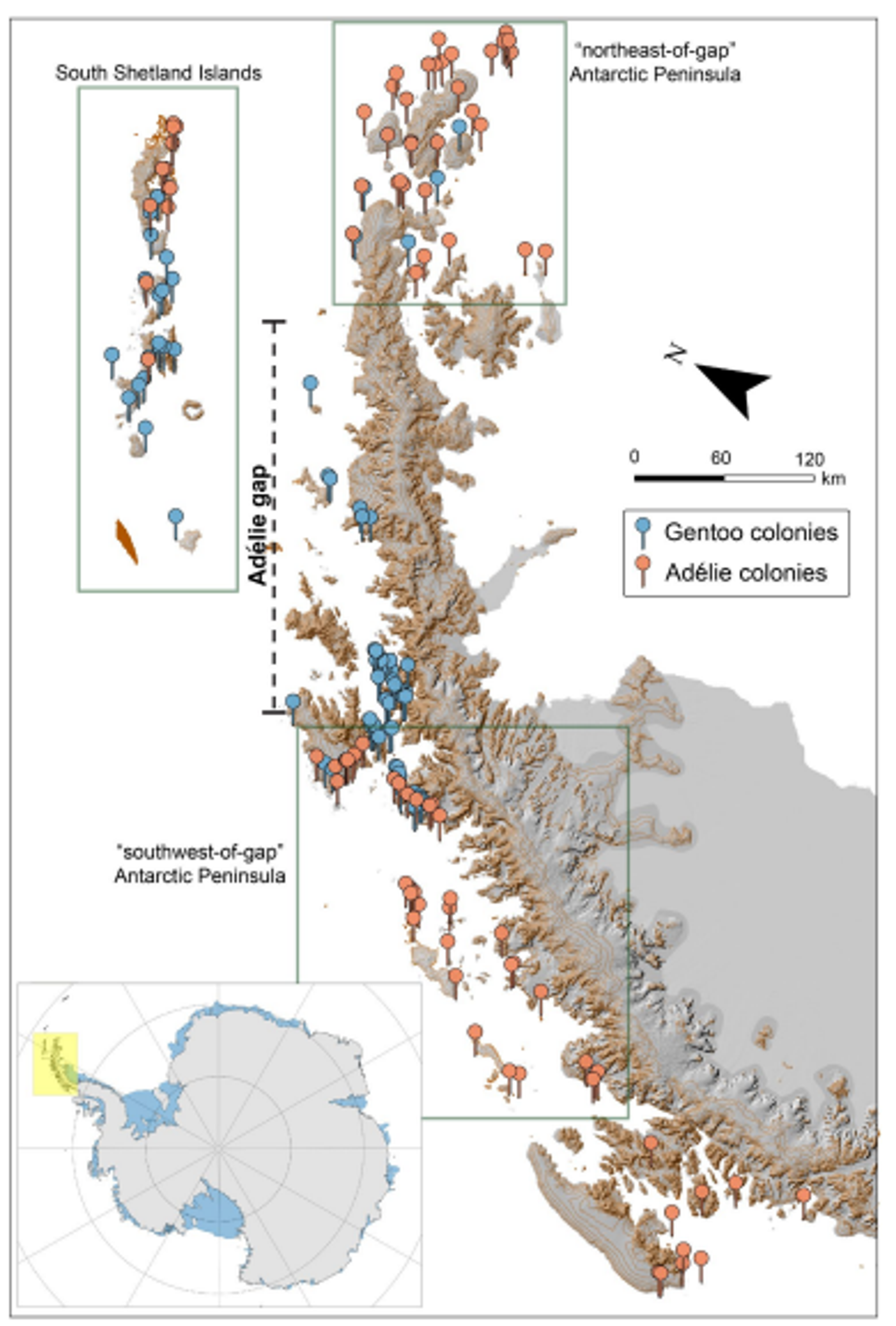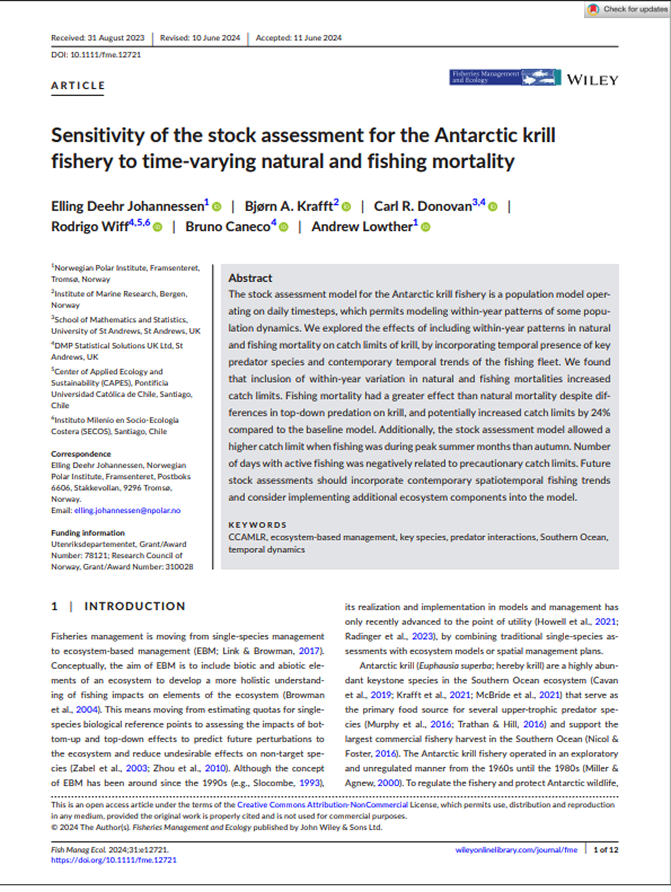Biomass
Antarctic ecosystem
Climate
Adélie penguins north and east of the 'Adélie gap' continue to thrive in the face of dramatic declines elsewhere in the Antarctic Peninsula region
Summary
This expedition to the northern Antarctic Peninsula and Weddell Sea in 2021/22 surveyed penguin populations in a previously under-studied region. The study found that Adélie penguin populations north and east of the "Adélie gap" (a 400-kilometer stretch where no Adélies are found) have remained stable or grown over recent decades, in sharp contrast to documented population declines on the Western Antarctic Peninsula.
The research discovered new penguin colonies, revisited historical breeding sites, and found that the Adélie gap represents a true ecological boundary rather than the Peninsula mountain range itself. Gentoo penguins have also expanded their range southward into the northern Weddell Sea. Sea ice analysis showed the northeast region experienced different patterns compared to areas south of the gap, with slight increases in summer sea ice while other areas showed decreases.
The research discovered new penguin colonies, revisited historical breeding sites, and found that the Adélie gap represents a true ecological boundary rather than the Peninsula mountain range itself. Gentoo penguins have also expanded their range southward into the northern Weddell Sea. Sea ice analysis showed the northeast region experienced different patterns compared to areas south of the gap, with slight increases in summer sea ice while other areas showed decreases.

1
Map showing Adélie and gentoo penguin breeding colonies on the Antarctic Peninsula. Lower left inset shows the Antarctic Peninsula region (highlighted in yellow) within the entire Antarctic continent. Map created using ArcGIS Pro 3.0 mapping software (https://pro.arcgis.com).Key Findings
1
Researchers counted 102,142 Adélie penguin chicks across 9 breeding sites, including several previously unknown colonies. 2
The Devil Island population grew by 8% annually from 1996-2021, while other major colonies showed stable population trends. 3
The team found 3,694 gentoo penguin chicks across 4 colonies, including a new southernmost breeding colony at Cape Scrymgeour. 4
More than half (55%) of all Antarctic Peninsula Adélie penguins nest in the Danger Islands region. 5
Sea ice concentrations increased slightly during summer months northeast of the gap, while decreasing in other areas. 6
The "Adélie gap" represents a real ecological boundary that separates stable penguin populations from declining ones.

